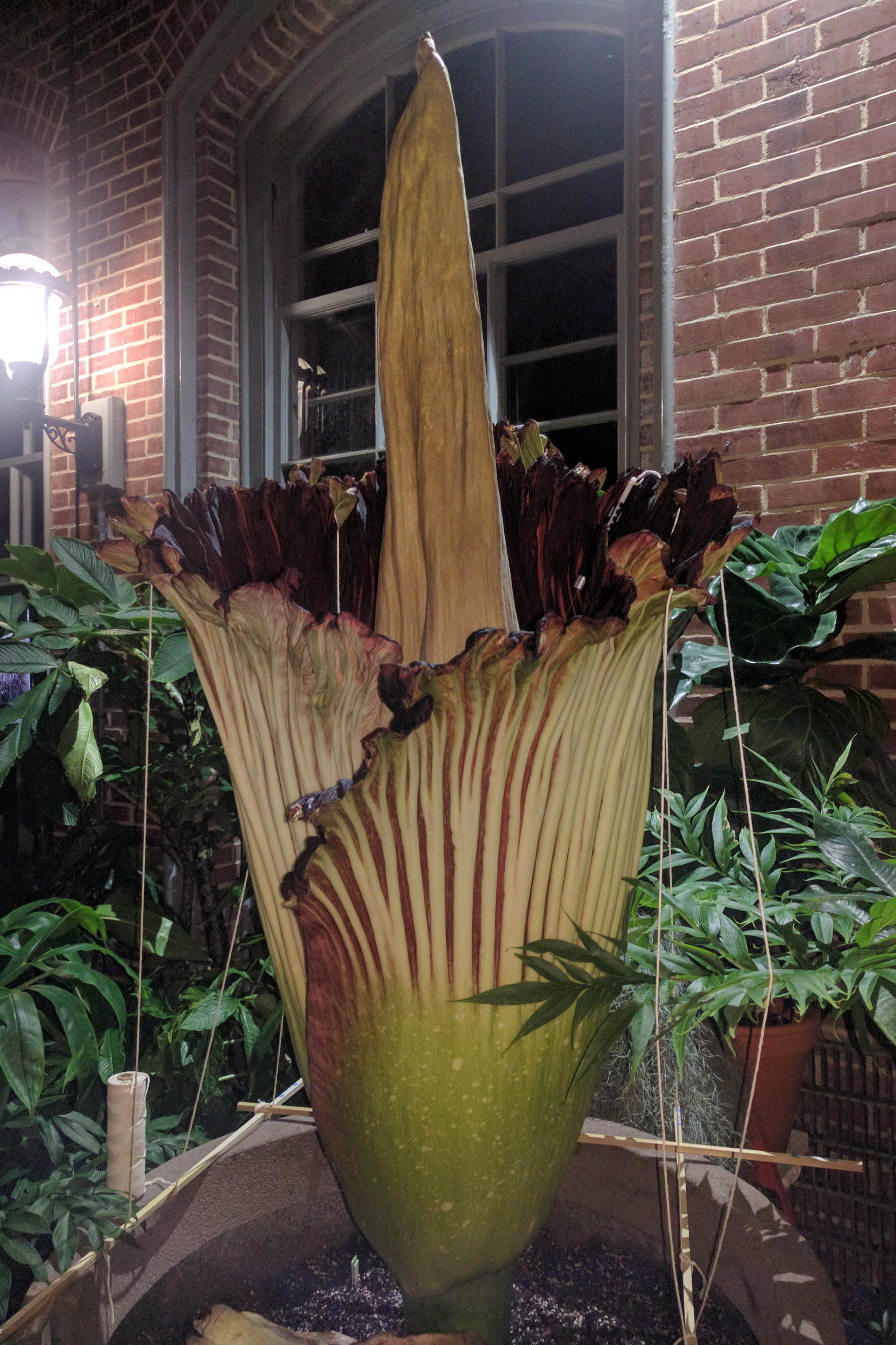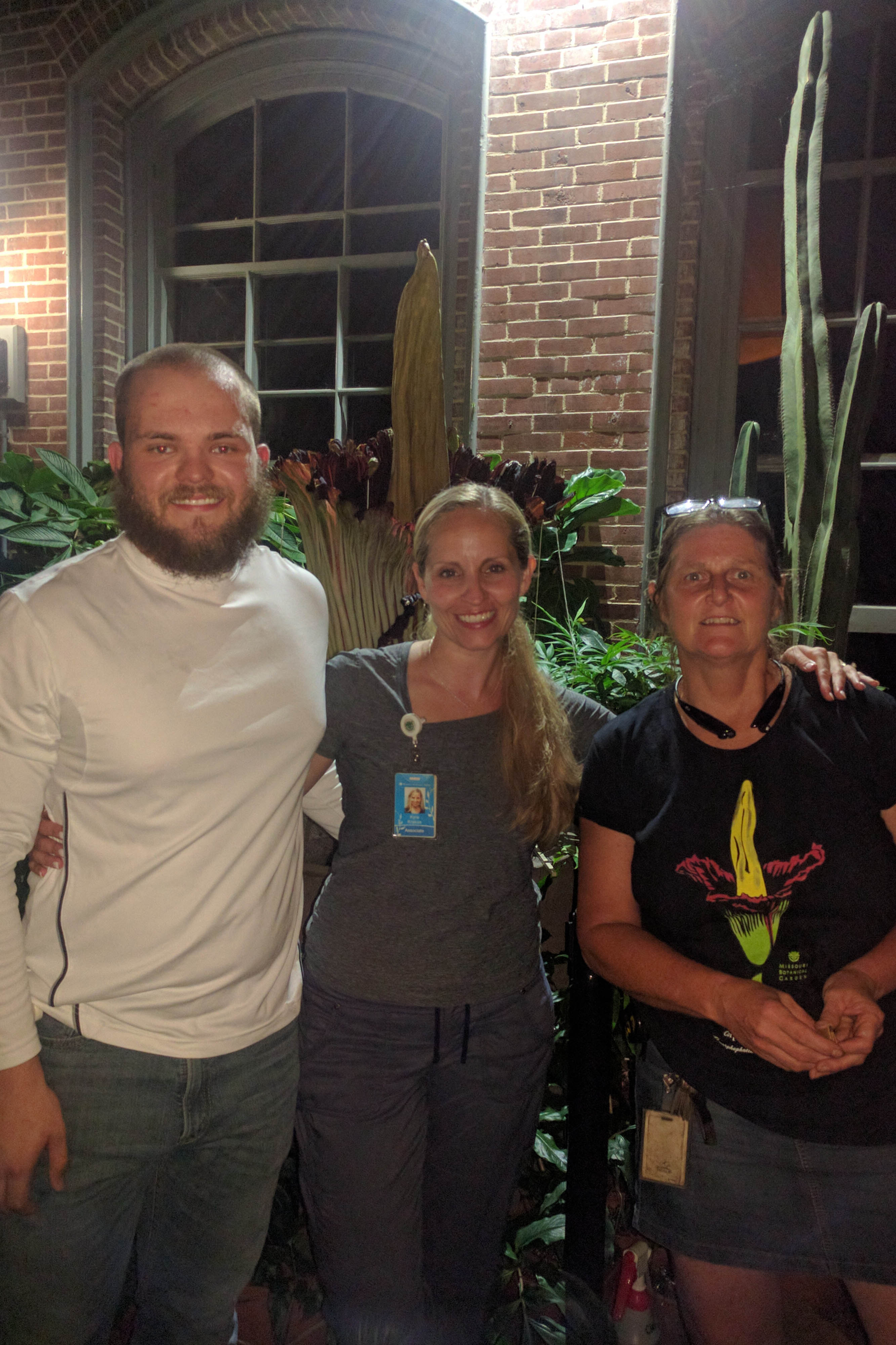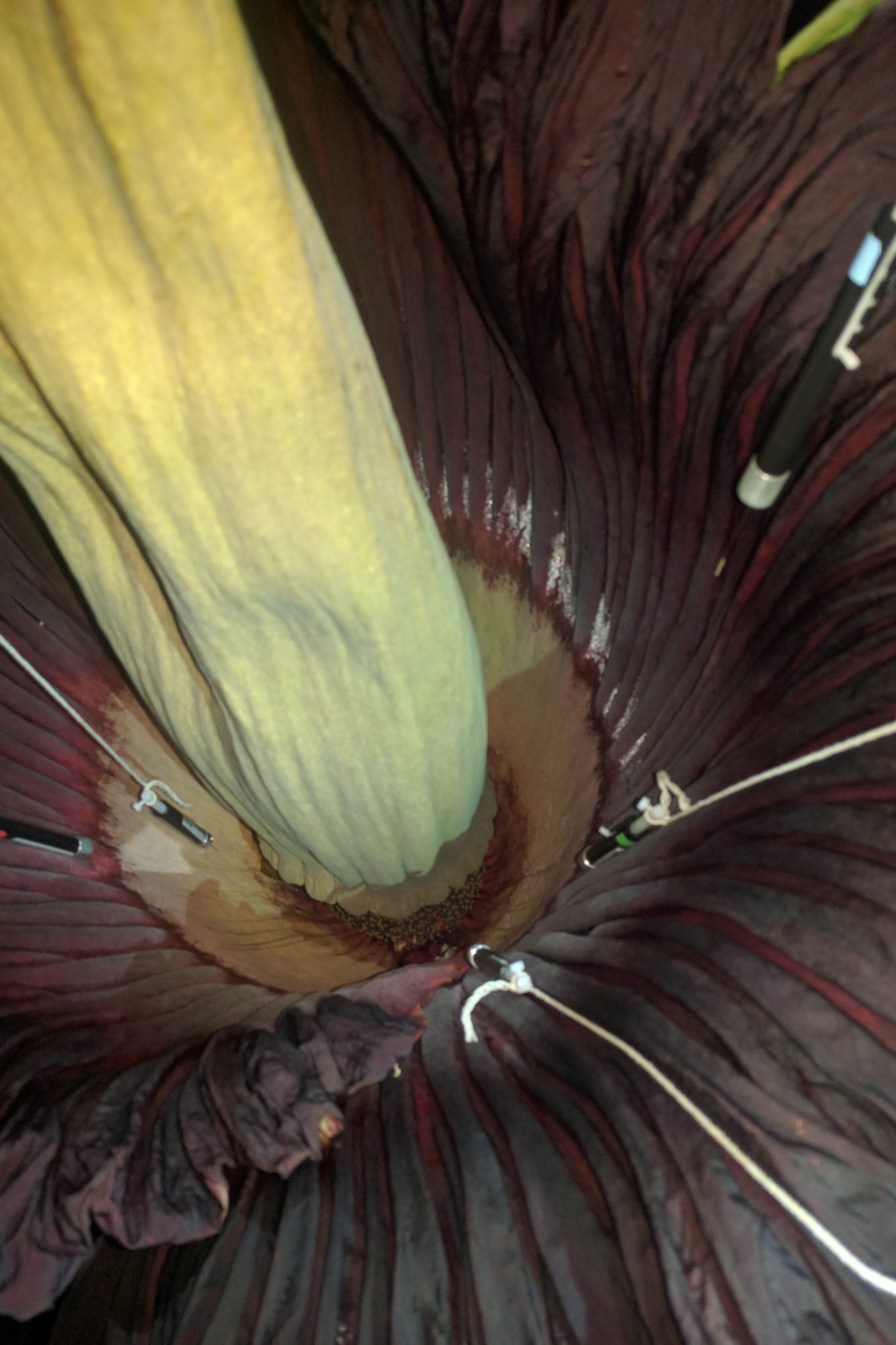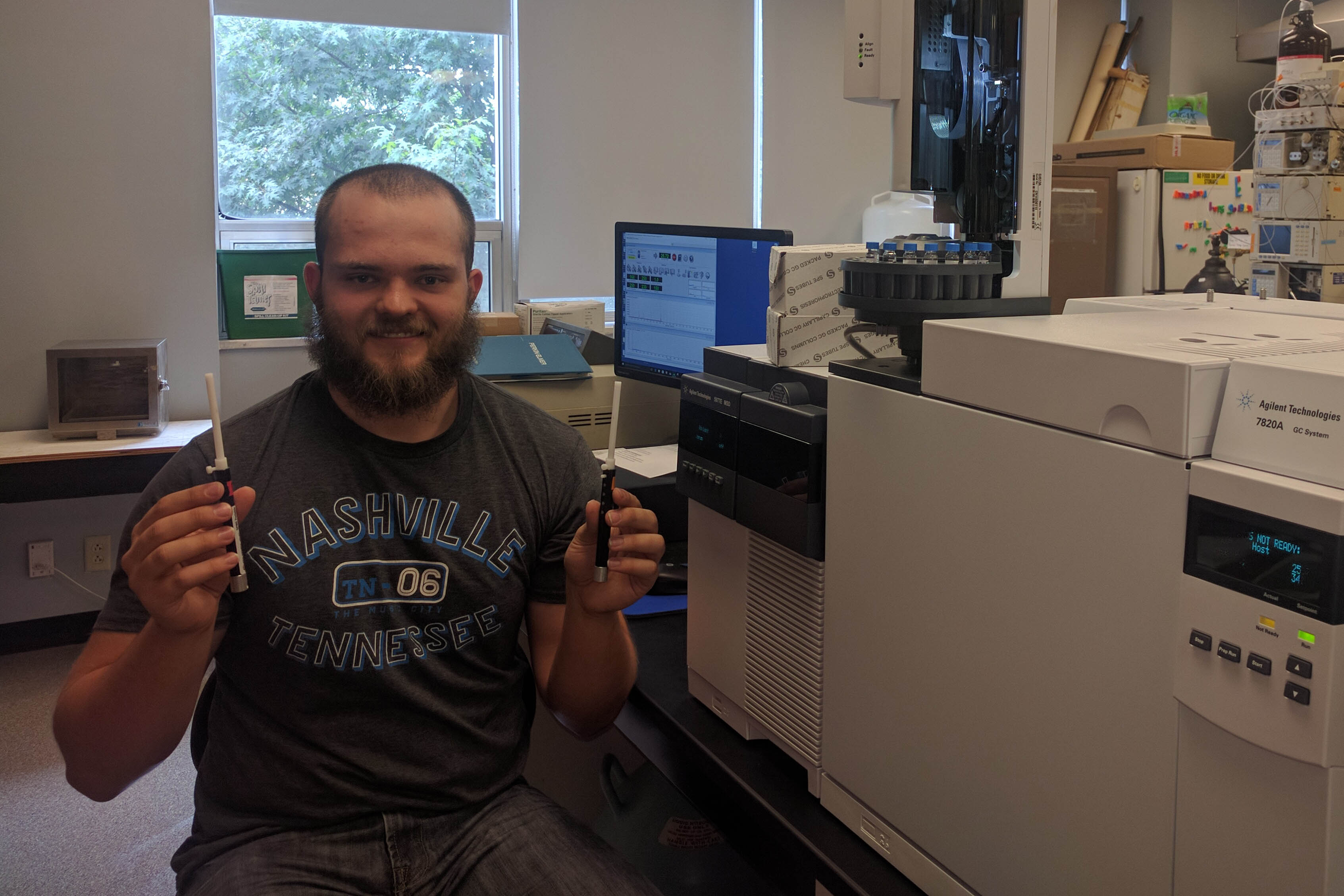A botanist isn’t usually on call to respond in plant emergencies. However, when the opportunity arises to study a flowering plant that only blooms once every seven years or so, innovation is required.
“I was studying for the GRE on a Thursday night and decided to take a break,” says Adam  Rork, ’17, a biochemistry major. “I found the corpse flower’s live feed on the Missouri Botanical Garden’s YouTube channel and discovered it was about to bloom.”
Rork, ’17, a biochemistry major. “I found the corpse flower’s live feed on the Missouri Botanical Garden’s YouTube channel and discovered it was about to bloom.”
This wasn’t just any science student being interested in rare blooms. Adam researches the role of scent in plant reproduction, and this plant has a distinctive, well … obnoxious, smelly scent.
“I jumped on the opportunity,” he says. “Within 12 hours we had permission from the Missouri Botanical Garden, and by Saturday night we were collecting scent samples from the bloom at its peak.”
The corpse flower, scientifically named Amorphophallus titanum or more commonly known as titan arum, is a large, slow-growing plant. Few exist in cultivation. It can take up to 10 years of vegetative growth to bloom, and only blooms on rare occasions. Even then, peak bloom lasts just six to 12 hours. Rork had a short window of time to seize the research opportunity.
“Within 12 hours we had permission from the Missouri Botanical Garden, and by Saturday night we were collecting scent samples from the bloom at its peak.”
 Significance of the Research
Significance of the Research
“The corpse flower is not on our radar at all. It’s cool, but blooms so rarely it’s hardly a study organism,” says Kyra Krakos, PhD, assistant professor of biology. Rork is a student in her Maryville lab, which does work with the Missouri Botanical Garden. “There is not a large body of work on this plant for obvious reasons. It’s a rare plant, and you don’t get to collect data on it very often.”
All plants maintain a certain appearance, color, and scent to attract insects to pollinate them so they can reproduce. In the case of the corpse flower, its pollinators are flies and beetles that are attracted to its stench—which has been described as the smell of rotting meat, garlic, fecal matter, and other unpleasant aromas. If that wasn’t bad enough, the corpse flower heats up to more than 100 degrees Fahrenheit to intensify the odor and spread it over a wider area.
Maryville’s set of data will be added and compared to existing data about the corpse flower; the research mainly confirms compounds previously detected. Rork will make his findings public and is considering various options, including a peer review journal, blog and poster.
 “The main significance of our research rests in the fact that there were hundreds of people at midnight at the Missouri Botanical Garden to see the rare bloom, and who saw Maryville scientists working on the plant,” says Krakos. “People saw how engaged Maryville is in the scientific community.”
“The main significance of our research rests in the fact that there were hundreds of people at midnight at the Missouri Botanical Garden to see the rare bloom, and who saw Maryville scientists working on the plant,” says Krakos. “People saw how engaged Maryville is in the scientific community.”
Krakos is currently a research associate with The Missouri Botanical Garden and has created other opportunities for student research teams.
“The partnership with Maryville supports the Missouri Botanical Garden mission to discover and share knowledge about plants and their environment in order to preserve and enrich life,” says Emily Colletti, Missouri Botanical Garden horticulturist who worked with Rork and Krakos. “Knowing the compounds in the scent of the titan arum will allow us to add a layer of educational information the next time we have one in flower.”
“Working on this project was like meeting an idol in real life, which is weird because it’s a plant,” says Rork. “Seeing its sheer size and smelling it was different than seeing it on YouTube. You hear about how bad it smells, but it’s different getting up close to the flower and looking inside it.”
“Adam had his eyes and mind open, and we at Maryville had resources in place to jump on that opportunity,” says Krakos. “I love that a student is seeing science everywhere and wants to actively ask questions about everything. That’s exactly who we’re looking for in this field.”
 Corpse Flower.H
Corpse Flower.H